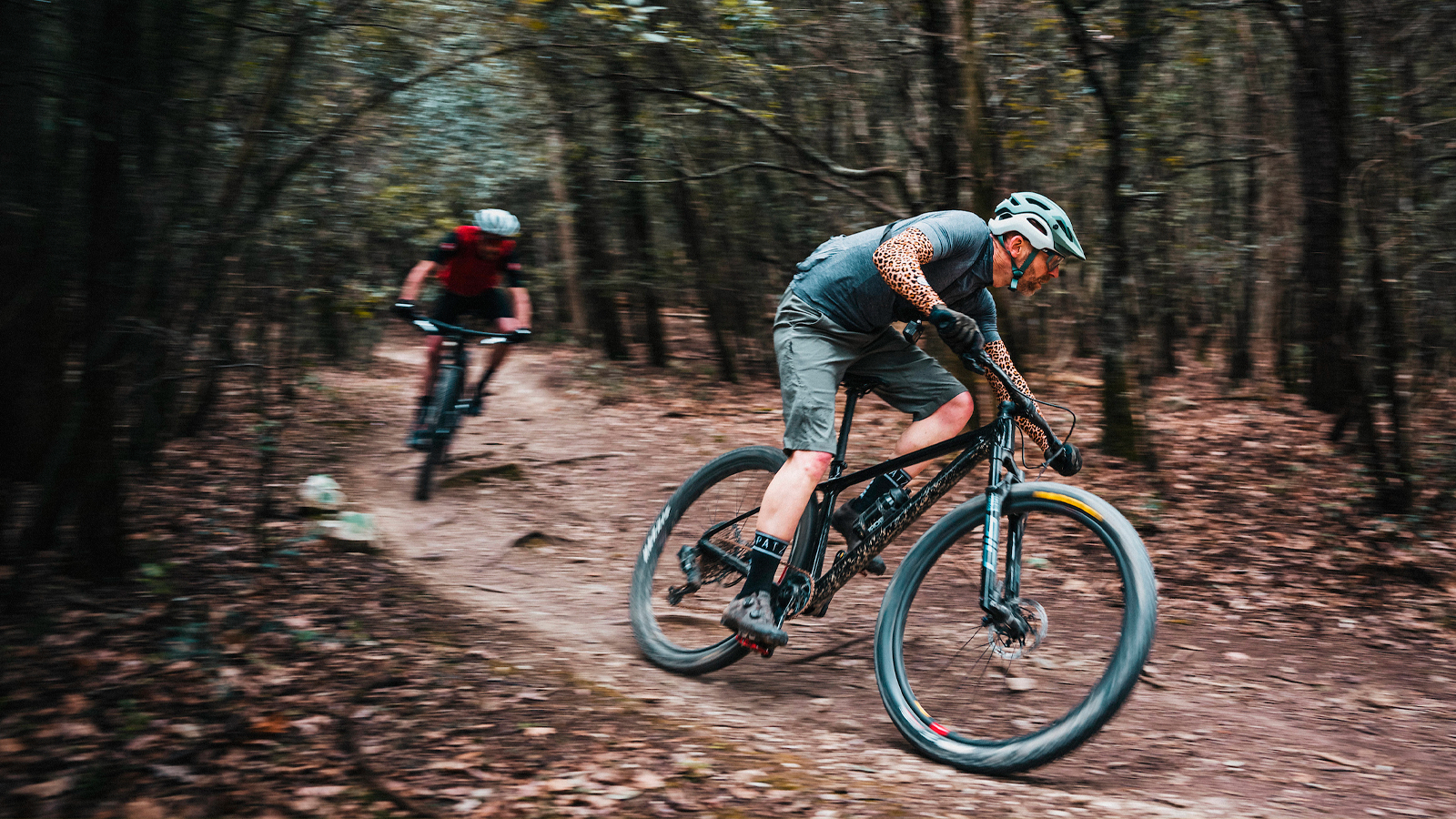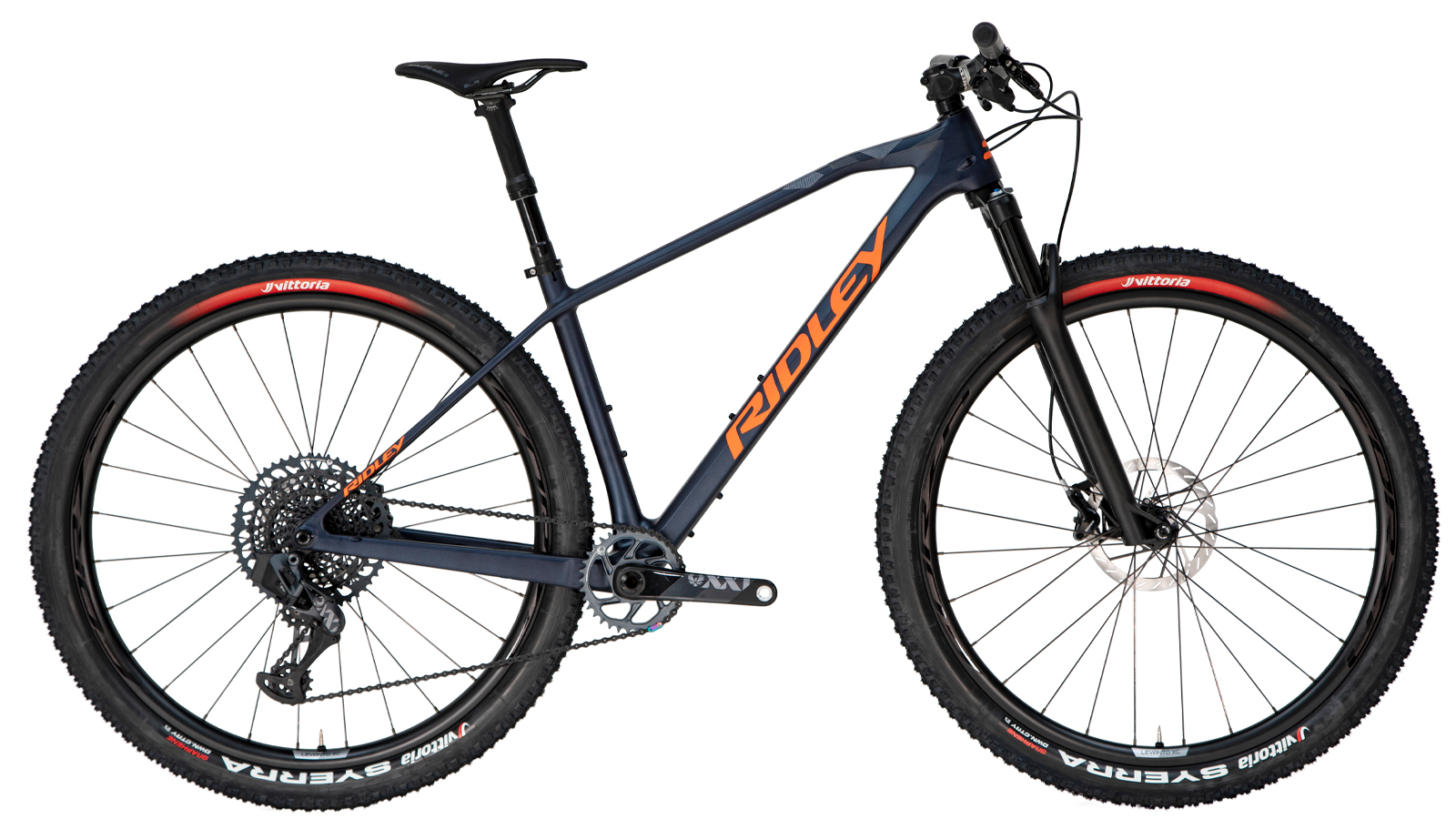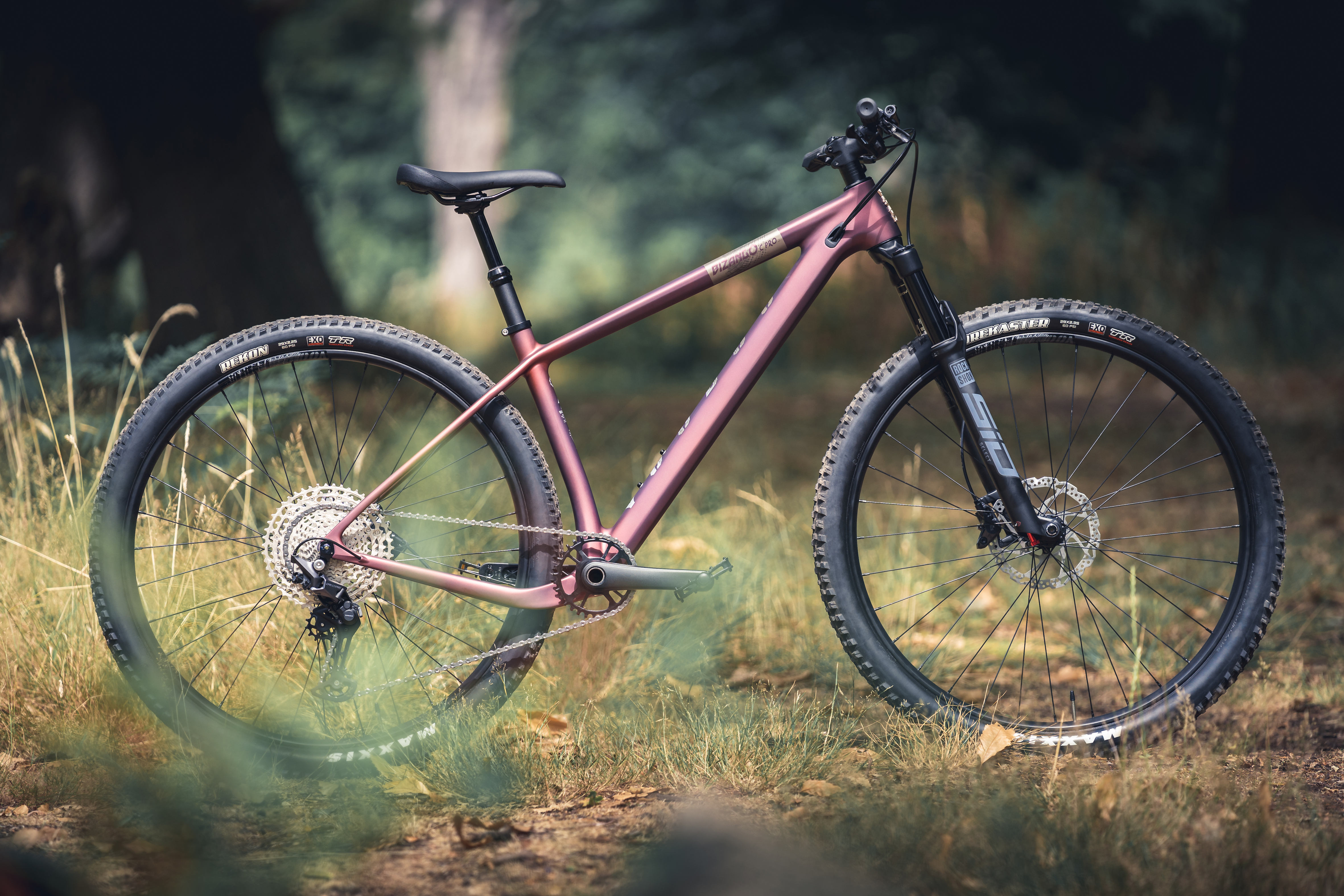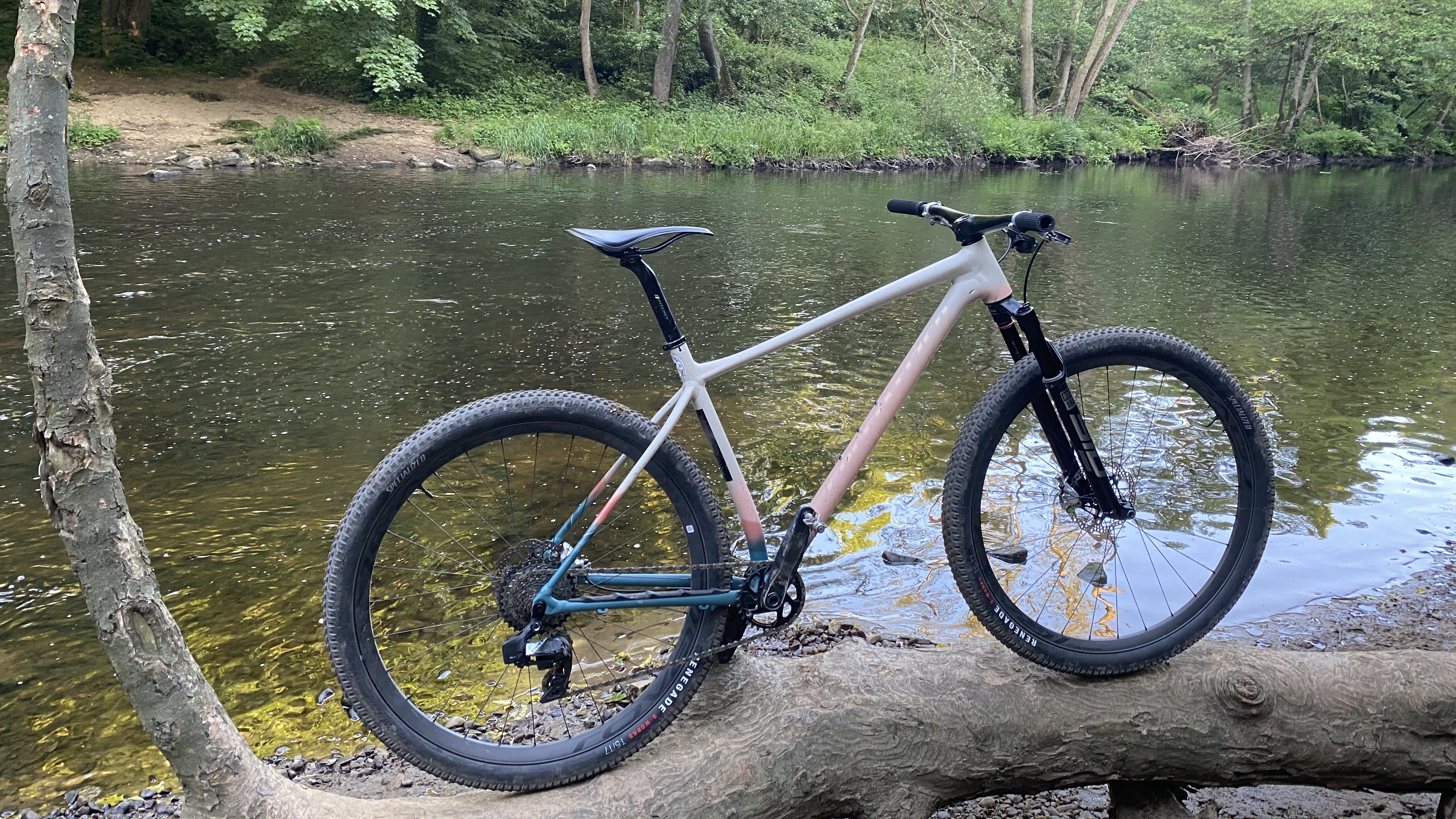Bespoken Word – hardtail hard sell?
Are lightweight, short-travel ,‘race’ hardtails still relevant to mountain biking?

It’s been a bonus week for racey hardtail launches with Voodoo, Ridley and Cervelo bringing out lightweight, shorter fork, no rear shock, XC speed machines. We’ve already ridden the latest version of a dominant bike in this category ahead of a launch later this year too. But with most XCO racers now on full-suspension and trail hardtails going with longer forks and slacker angles are traditional race hardtails still relevant? And if it’s a yes, what and who for?
What is an XC hardtail these days anyway?
What’s important to realize first is that the leading edge of the category is definitely changing. We don’t just mean leading edge on price either. The new Bizango Carbon from Voodoo comes with a 66.5-degree head angle and 120mm fork. The bike we teased in the intro pic above can be set up as slack as 66 degrees with a super steep seat angle to match and the shorter stem, longer reach shape that’s been dominant in trail bikes for over a decade is gradually creeping into the XC race pack. Not all new bikes are heading that way though and both Cervelo’s ‘rationally progressive’ geometry on their ZHT-5 and the AGP geometry on Ridley’s Raft include a 68.5-degree head tube holding a 100mm fork. And while Voodoo and Ridley fit short stroke dropper posts, Cervelo aren’t alone in staying with a fixed height post to save weight on their new bike.
“Insanity!” the keyboard warriors on forums shout, XC bikes need to be slacker and longer, just like the trail bikes we ride because XC courses are getting more and more technical. And they certainly have a point if you’re using a hardtail on aggressive terrain, whether that’s for racing or just fast riding. But most racers are now using full-suspension bikes (generally with more progressive geometry) in more technical races. In fact talking to rising XCO and XCM race star and marathon National Champion, Amy Henchoz, who’s part of our Thursday night ride pack most racers are now using full-suspension bikes for every race. She says she’s definitely an outlier lining up on her hardtail and is hoping to be getting a double-sprung option for next season if she can find a sponsor. So if a 60kg racer who fully understands the physics advantages of the lightest bike possible is desperate to get on a heavier full-suspension bike with a dropper post and slacker angles, what future is there for short travel, sharp handling hardtails?

New age fun with a vintage feel
But while it might seem like bikes with 100mm forks, no rear suspension and head angles nearer 70 than 65 degrees are obsolete, I’ve actually ridden bikes like that more this year than I have in the last twenty years. Only a day of that has been on the Cervelo ZHT-5 launch too. The rest of the time it’s been on a custom build I put together as something of a joke during lockdown but has turned out to be one of my favorite ‘evergreen’ machines.
And the Cervelo and Ridley look and ride like calm and considered trail bikes compared to my Specialized Chisel build. Not only is the super slim alloy frame an XL (it was the only size they had spare) but I’ve matched the 68-degree head angle with a super short reach ‘all in one’ carbon cockpit from Syncros and the alloy post is fixed length. Sub 600g S-Works tires on lightweight Roval Control carbon wheels and a 10-36T road block keep weight hovering around the 9kg mark depending on other kit. That’s only 200g heavier than the Cervelo ZHT-5 and 500g lighter than the titanium framed gravel bike I’ll be writing the review of this afternoon. Unsurprisingly the resultant hyper responsive steering on an already willowy frame with the saddle up my butt can create a hysterical rodeo that when things get tasty. I definitely wouldn’t consider racing it apart from on an CX course either.

The past is the future
So how has it become one of my favorites rides – and the bike that’s been most borrowed by my mates. One of whom actually bought themselves a Chisel frame straight after he reluctantly returned ‘mine’ because he was missing it so much. And the answer is quite simple, it’s because when any given type of riding evolves and moves on in terms of the challenge and technicality involved it leaves a void behind it. And in this case that void is basically what XC riding has always been for loads of us. Relatively low risk level ‘organic’ trails – forest roads, farm tracks, bridleways, cheeky singletrack across moors or through woods where drops are rolled and rocks ridden round, not ‘sent’ or ‘schralped’. Places where you’re more likely to meet an actual fox than someone wearing Fox. But while that sounds kind of tame and lame, that's because you're not adding the fact that the bike you're on feels basically weightless and explodes out of corners and charges up climbs like you've got super hero powers.
And while the mountain bike media and marketing hype-mongers abandoned these riders as a lost cause before the end of the last century there’s a huge number of these sort of riders around. Even in the UK there are hundreds of people doing low key, low cost MTBO orienteering events or just meeting up for rides with the same mates they did in the 90s, often on the same trails. And if you include Europe, South Africa, South America and the Far East – where there are several marathon events with five-figure rider entries most weekends and countless smaller events that still attract thousands – then suddenly what ‘Freeridehero’ or whoever on the Pinkbike forum says about hardtail design seems even less relevant. And that’s accountable not just anecdotal when you know that half of Scott’s global MTB sales come from their XC race hardtail range.

Deja-vu
And the big irony is that what the industry have ignored so long from an MTB perspective is actually what they’ve been gushingly rebranding as ‘gravel riding’ for the past few years. So as ‘gravel racing’ starts to turn sour as a recreational event with a civil war breaking out over the use of aerodynamics, tri bars, trade team style tactics and even a controversial a UCI World Championships, now is the perfect time to hop on an MTB instead. Especially if that MTB isn’t so radical that it feels totally weird coming off a road bike but still rides far better on more technical terrain than a gravel bike ever will. Even a gravel bike with wide, flared drop bars, some kind of weird short travel suspension and a semi knobbly tire, you know like a, well you know....
And the further good news is while gravel is only just embracing the tech that MTB moved on from in the early 90s, the fact the last ten years of XC MTB evolution have been so slow that even designs from a decade ago still do the job very well. That means lots of old frame molds and products whose R&D costs were swallowed years ago can now be bought for a song – or even second hand – if you don’t want the latest and greatest subtly better option. And that’s definitely not the case with super trail, downcountry, enduro or any of the other hot trends under the current hype spotlight.
So yeah, maybe modern mountain biking has moved on from the ‘XC hardtail’ but if you want the perfect bike for doing the kind of exploring and outback curiosity that created MTB in the first place and which a huge amount of riders, including me, enjoy then its future is very much alive. We just need to ditch the skinsuit and syringe elitist vibe that scared many people away twenty years ago and wrap them in the same inclusive fireside flannel vibe that’s made gravel so popular, but which was ultimately taken from those 70s Clunker pioneers.

Guy Kesteven has been working on Bike Perfect since its launch in 2019. He started writing and testing for bike mags in 1996. Since then he’s written several million words about several thousand test bikes and a ridiculous amount of riding gear. He’s also penned a handful of bike-related books and he reviews MTBs over on YouTube.
Current rides: Cervelo ZFS-5, Specialized Chisel, custom Nicolai enduro tandem, Landescape/Swallow custom gravel tandem
Height: 180cm
Weight: 69kg
